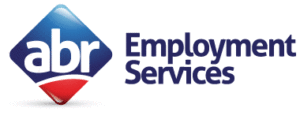Confined Spaces: Workplace Safety
Practice The Safety Attendant Buddy System
- Has a hazardous or potentially hazardous atmosphere
- Contains a material which can engulf the person entering (grain silo for example)
- May have walls that converge inward or floors that slope downward and taper into a smaller area which could trap or asphyxiate an entrant
- Might contain other serious physical hazards such as unguarded machines or exposed live wires.
Potential hazards of confined spaces include:
- Toxic fumes
- Oxygen deficiency
- Explosive atmosphere
- Exposure to hazardous energies
- Moving machine parts
- Engulfment/entrapment
Confined spaces must be identified by employers who must inform employees of the existence and location of such spaces and their hazards. Even though an employee’s job may not mandate confined space work, employees need to know where they are and what the hazards are so they don’t attempt to enter.
Unfortunately common confined space deaths happen when someone with good intentions tries to help an entrant that fainted in the confined space due to lack of oxygen. They go in the confined space thinking they will rescue the entrant without knowing what the hazards are in the confined space and they also become a victim.
Safety precautions for confined space entry:
Perform a hazard assessment, identify all hazards and needed controls. Include hazards created by the work itself. Get a confined space permit signed by a confined space entry supervisor.
Monitor air; provide initial and continuous monitoring for toxins, flammables, and oxygen. Ventilate and monitor when performing hot work or applying chemicals either in a confined space or an adjacent area.
- Lock-out all energy sources
- Use proper controls and protective equipment; this includes respiratory, skin, eye, and fall protection
- Set up a retrieval device
Confirm that training is current for entry personnel, attendants, supervisors and rescue personnel.
Lastly, ensure that the attendant is at the point of entry, in communication with rescue and entry personnel, knows how to prevent heat stress.
Workplace Safety A Dual Responsibility
Dave Unmacht, Senior Risk Specialist at ABR Employment Services, closely monitors and updates ABR staff on safe workplace operations. As your manufacturing workforce solutions partner, we have a dual responsibility to ensure the health and safety of all worksite employees, temporary and permanent staff alike. Thank you for your continued partnership and for your tireless efforts to protect the health and safety of employees. If you have any questions, please contact your ABR Representative.
